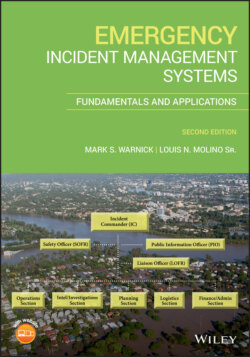Читать книгу Emergency Incident Management Systems - Mark Warnick S., Louis N. Molino Sr - Страница 50
2.4 Case Study: Tokyo Versus Oklahoma City
ОглавлениеIt is common knowledge that emergency incidents have a certain amount of chaos, uncertainty, and complexity. Usually, the larger the incident, the more these underlying factors present themselves. When we look at how to manage that chaos, uncertainty and complexity, we only need to look at an IMS method. Some might want to question the efficacy, or perhaps the legitimacy of IMS methods. For that reason, a case study was utilized to compare and contrast two incidents; one incident applied an IMS method (Incident Commands System [ICS]), while the other did not utilize any IMS method.
To help you to better understand the importance of using an IMS method for managing daily incidents, as well as rare and infrequent disasters, this review is of two separate incidents that occurred in 1995. The incidents are the Tokyo subway sarin gas attack and the Oklahoma City bombing. Both are similar in timeframe, type of incident, size of the response, and they have multiple other similarities. In the Oklahoma City bombing, the component that the first responders utilized was the ICS method, while in Tokyo, they did not utilize any IMS method. In looking at the efficacy of an IMS method, there are very few incidents that are as comparable in size, scope, and intent, which is the reason these two incidents were chosen.
The first incident to occur was the sarin attack in Japan during the month of March in 1995; the second incident, the Oklahoma City Bombing occurred in the United States in the month of April in 1995. Both incidents were considered mass casualty events. Both of these disasters were considered domestic terrorist attacks (manmade). While they occurred in different countries, both countries are considered developed countries. In both incidents, domestic terrorists used Weapons of Mass Destruction (WMD) to attack the citizens of their own country. These two events have multiple similarities, with the main differences being that in Japan it was a chemical attack (sarin), while the other was an Improvised Explosive Device (IED) bombing. Of course, while we want to compare the use of an IMS method versus none used, we must also consider that cultural differences might have played a role in these responses.
